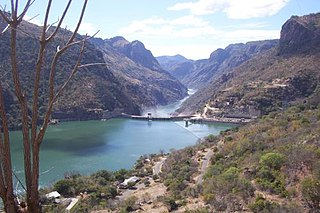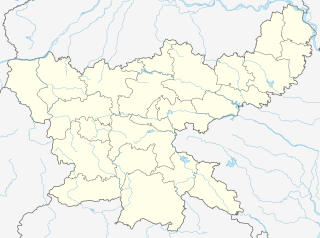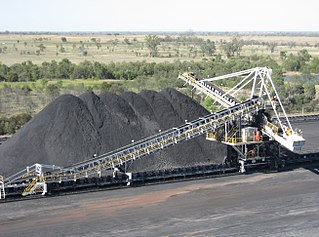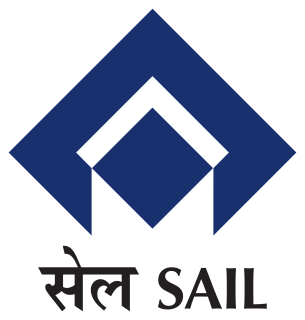
Tete is a province of Mozambique. It has an area of 98,417 km² and a population of 2,764,169.

Rio Tinto is an Anglo-Australian multinational and one of the world's largest metals and mining corporations. The company was founded in 1873, when a multinational consortium of investors purchased a mine complex on the Rio Tinto, in Huelva, Spain, from the Spanish government. Since then, the company has grown through a long series of mergers and acquisitions to place itself among the world leaders in the production of many commodities, including aluminium, iron ore, copper, uranium, and diamonds. Although primarily focused on extraction of minerals, Rio Tinto also has significant operations in refining, particularly for refining bauxite and iron ore. The company has operations on six continents, but is mainly concentrated in Australia and Canada, and owns its mining operations through a complex web of wholly and partly owned subsidiaries. Rio Tinto has joint head offices in London and Melbourne.

Jindal Steel and Power Limited (JSPL) is an Indian steel and energy company based in New Delhi, India. With turnover of approx. US$ 3.3 billion, JSPL is a part of about US$18 billion diversified Jindal Group conglomerate. JSPL is a leading player in steel, power, mining, oil and gas and infrastructure in India. The company produces steel and power through backward integration from its own captive coal and iron-ore mines.
Aluminum Corporation of China Limited, is a Chinese company listed in Hong Kong SAR and in New York. A Multinational aluminium company, its headquarters are in Beijing, People's Republic of China. It is the world's second-largest alumina producer and third-largest primary aluminium producer.
Rio Tinto Coal Australia (RTCA) is an Australian coal mining organisation, and is part of the worldwide Rio Tinto Group. In Queensland, RTCA operates the Blair Athol, Hail Creek, Kestrel and Clermont mines. In New South Wales, RTCA manages Coal & Allied's operations at Mount Thorley Warkworth, Hunter Valley Operations and Bengalla.
The mineral industry of Mozambique plays a significant role in the world's production of aluminium, beryllium, and tantalum. In 2006, Mozambique's share of the world's tantalum mine output amounted to 6%; beryllium, 5%; and aluminium, 2%. Other domestically significant mineral processing operations included cement and natural gas.
Coal mining in India began in 1774 when John Sumner and Suetonius Grant Heatly of the East India Company commenced commercial exploitation in the Raniganj Coalfield along the Western bank of Damodar river. Growth remained slow for nearly a century due to low demand. The introduction of steam locomotives in 1853 boosted demand, and coal production rose to an annual average of 1 million metric tons. India produced 6.12 million metric tons of coal per year by 1900 and 18 million metric tons per year by 1920. Coal production rose steadily over the next few decades, and was boosted by demand caused by World War I. Production slumped in the interwar period, but rose to 30 million metric tons by 1946 largely as a result of World War II.

Essar Group, founded by Shashi Ruia and Ravi Ruia, in 1969, as a construction company, later diversified into various core sectors, to become one of India's biggest multinational conglomerates.
Turquoise Hill Resources is a Canadian mineral exploration and development company headquartered in Vancouver, British Columbia. Its focus is on the Pacific Rim where it is in the process of developing several large mines, the principal one being the Oyu Tolgoi Project in Southern Mongolia 200 km east of Dalanzadgad. The company was called Ivanhoe Mines until August 2, 2012 when an important financing agreement was made with Rio Tinto.

The Eastern Range mine is an iron ore mine in the Pilbara region of Western Australia, 10 kilometres south-east of Paraburdoo.

NTPC Limited, formerly known as National Thermal Power Corporation Limited, is an Indian Public Sector Undertaking, engaged in the business of generation of electricity and allied activities. It is a company incorporated under the Companies Act 1956 and is promoted by the Government of India. The headquarters of the company is situated at New Delhi. NTPC's core business is generation and sale of electricity to state-owned power distribution companies and State Electricity Boards in India. The company also undertake consultancy and turnkey project contracts that involve engineering, project management, construction management and operation and management of power plants.
Some of the more notable coal companies in Australia are the following:

Lodna Area is one of the 12 operational areas of BCCL located in Dhanbad Sadar subdivision of Dhanbad district in the state of Jharkhand, India.
The Zambeze Coal Mine is a coal mine located in Tete, Changara District, Tete Province. The mine has coal reserves amounting to 9 billion tonnes of coking coal, one of the largest coal reserves in Africa and the world.
The Revuboè Coal Mine is a coal mine located in Tete, Changara District, Tete Province. The mine has coal reserves amounting to 1.4 billion tonnes of coking coal, one of the largest coal reserves in Africa and the world and has an annual production of 5 million tonnes of coal.

The Hail Creek Coal Mine is a coal mine located within the Bowen Basin at Hail Creek in Central Queensland, Australia. The mine has coal reserves amounting to 970 million tonnes of coking coal, one of the largest coal reserves in Asia and the world. The mine has an annual production capacity of 5.5 million tonnes of coal. In 2011, seven million tonnes of coal were produced. The mine is operated by Rio Tinto Coal Australia and owned by Queensland Coal, Nippon Steel Australia, Marubeni Coal and Sumisho Coal Development.

The Kestrel Coal Mine is an underground coal mine located in the Bowen Basin at Crinum, 51 km northeast of Emerald in Central Queensland, Australia. The mine has coal reserves amounting to 158 million tonnes of coking coal, one of the largest coal reserves in Asia and the world. The mine has an annual production capacity of 4 million tonnes of coal. Both hard/semi hard coking coal and thermal coal is mined.














